Winter is coming, and it is time to protect essential garden tools and equipment from damage. But do you need to winterize your drip irrigation lines? We researched if it is necessary to do so, and here is what we discovered below!
Yes, you need to winterize your drip lines. It is essential to do it before the weather gets cold to avoid damage to your system.
The parts' repair and replacement costs are not cheap, so preparing your drip lines and your whole irrigation system for the winter is crucial.
So why should you winterize your drip lines, and what are the benefits of doing so? And when is the best time to do it? Keep reading as we answer these questions in the succeeding sections. We'll also discuss winterizing your drip lines and share other helpful tips. Let's begin!
Why Should You Winterize Drip Lines?
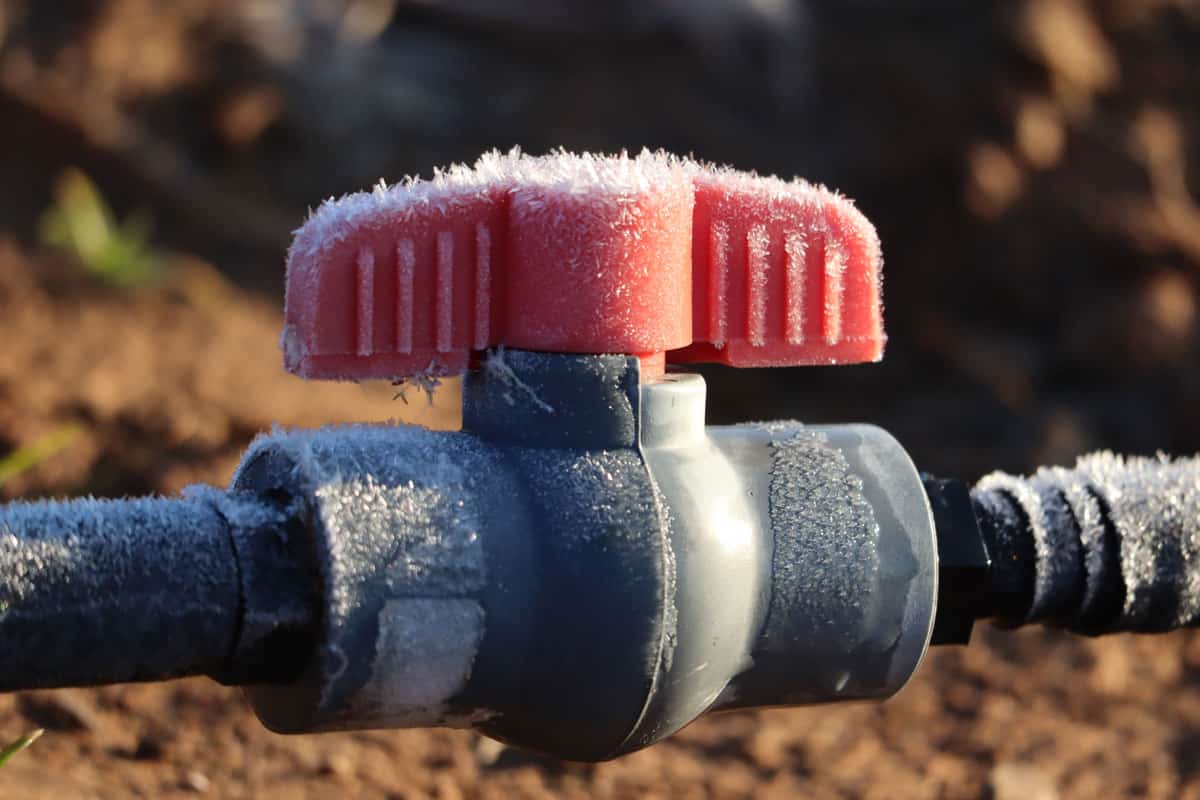
Drip irrigation systems have components such as pipe fittings, pipelines, filters, pumps, and valves that are all extremely prone to bursting if there is freezing water inside them.
Winter temperature fluctuations can put a lot of strain on tubing, possibly leading to bursting or brittleness. Allowing your drip irrigation system to freeze and burst will make your investment go down the drain.
What Are The Benefits Of Winterizing Your Drip Lines?
Here are some of the benefits you can enjoy when you winterize your drip irrigation system:
- Prevent or minimize bursting brought about by freezing water inside your pipelines.
- Protect valves and pumps from damage.
- Saves you from costly repairs and parts replacement.
- Ensures that your system will work when you use it after winter.
When Is The Best Time To Winterize Your Drip Irrigation System?

The best time to winterize your drip irrigation system is during the fall. You should complete the process before the first frost, preferably 2-3 weeks prior.
Additionally, it only takes 15 minutes to 1 hour to completely winterize your system.
How To Prepare Your Drip Lines For Winter
Winterizing your drip lines is an easy process. It only takes less than an hour to complete this process.
After cutting off the water supply from the source, draining the timer and head assembly, and storing them indoors, you can follow these steps to winterize your drip system properly.
Step 1: Flush The System
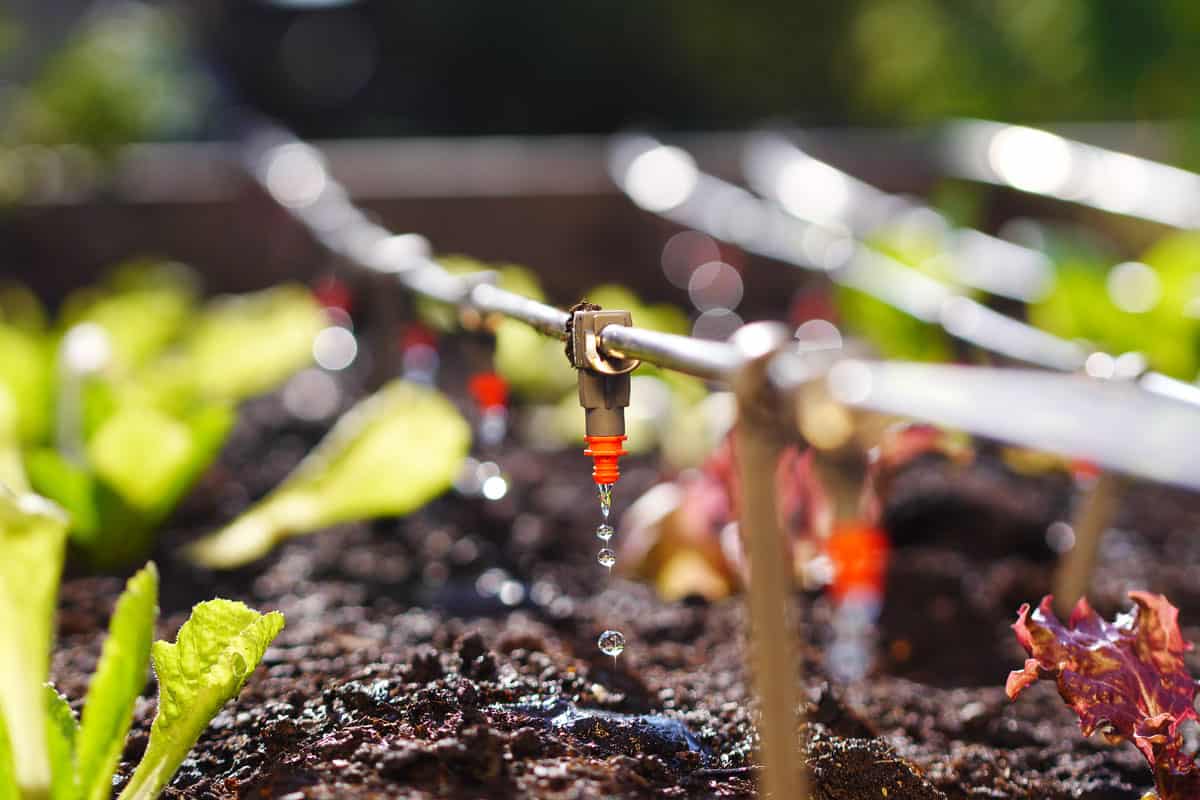
This is crucial to remove any junk lodged in the system. You must first flush your system with pressurized water. Make sure your water is debris-free, so you will not defeat the purpose of flushing.
You can then flush it with chlorine to get rid of algae growth. After that, rinse it with water to remove the chlorine chemicals from your pipelines.
Click here for this product on Amazon.
Step 2: Let Excess Water Flow Off
Remove the end caps from drip pipes from your system's lowest point to allow water to drain out. It is advisable to check your main and lift lines and their fittings.
This will lessen the possibility of having standing water in pipes and freezing when the temperature gets too low. If you think trapped moisture is inside your drip lines, use an air compressor to blow it out.
Click here for this portable air compressor on Amazon.
For systems with automated valves, manually check to ensure every valve is open before running the controller through its regular cycle to drain any excess water.
Make sure to reopen all valves to stop water from accumulating inside while it is left unattended.
Step 3: Flush And Drain Your Filters
Back flush your media filters to clear them from sediments. Doing this will lessen the chance of crust formation over the media when no water is present in the filter during winter.
You can then close the drain port and stop the backflushing procedure if the stream of water produced is now clean.
While draining your filters, check the screen to see if it is in excellent shape and free of any sediment. You can put the assembly back together at this time or take it off and store it for the winter.
Step 4: Drain The Pumps
Drain any system-connected pumps you can find above ground because these can freeze water in low areas.
The case of your pump may crack if there is standing water. This is due to water's expansion when frozen.
Step 5: Insulate Your Pipes
In freezing weather, this step is crucial. Cover everything that is exposed, up to the risers, with insulation.
Using foam insulating tape or tubes readily available at home supply stores is acceptable.
Click here for this insulating tape on Amazon.
You can also use frost blankets to cover any above-ground lines. Frost blankets come in a variety of designs to insulate pipes. Wrapping the pipe in insulation made of fiberglass also works nicely.
Step 6: Ensure The Safety Of All Electrical Parts (Including Your Engines)
Lock your electrical boxes to avoid accidental ignition of system components. By doing this, the system won't switch on and risk introducing water into its parts, which could cause damage when it freezes.
Additionally, all motors transporting water to your system should be serviced.
Step 7: Store Non-Electrical Components
Safeguard your non-electrical components by keeping them all in indoor storage. It would help if you covered open ends to protect them from rodents.
Although, you can also opt to leave them outside. Your irrigation system is now ready for the winter!
Tips For Operating A Drip Irrigation System After Winter
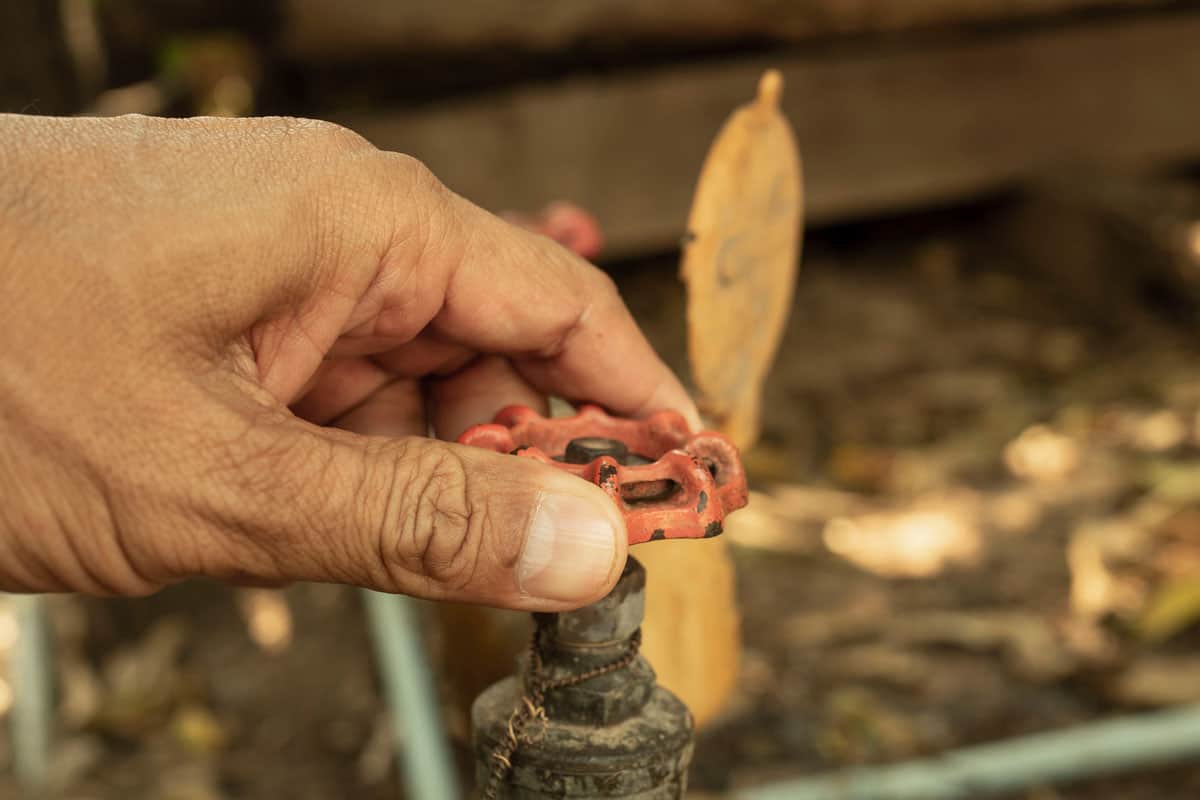
Once winter is over and spring arrives, it's time to resume the operation of your drip irrigation system.
To avoid damaging your pipes and other components, here are a few crucial tips when starting up your system for the first time after winter:
- Ensure that all end caps are tightened to avoid leakage.
- Check for cracks or breaks in your lines that might have happened over the winter.
- Replace any damaged or broken parts.
- Replace your old alkaline batteries with new ones in your battery timers.
Click here for this alkaline battery on Amazon.
- Gradually fill your pipes with water by slowly opening the main water valves. Otherwise, your main sprinkler lines could break or explode if you open the valves too soon because of the enormous surge pressures, unrestrained flow, and water hammer they would experience.
- Check if the station valves are operating correctly.
How Else Can You Water Your Plants During The Winter?
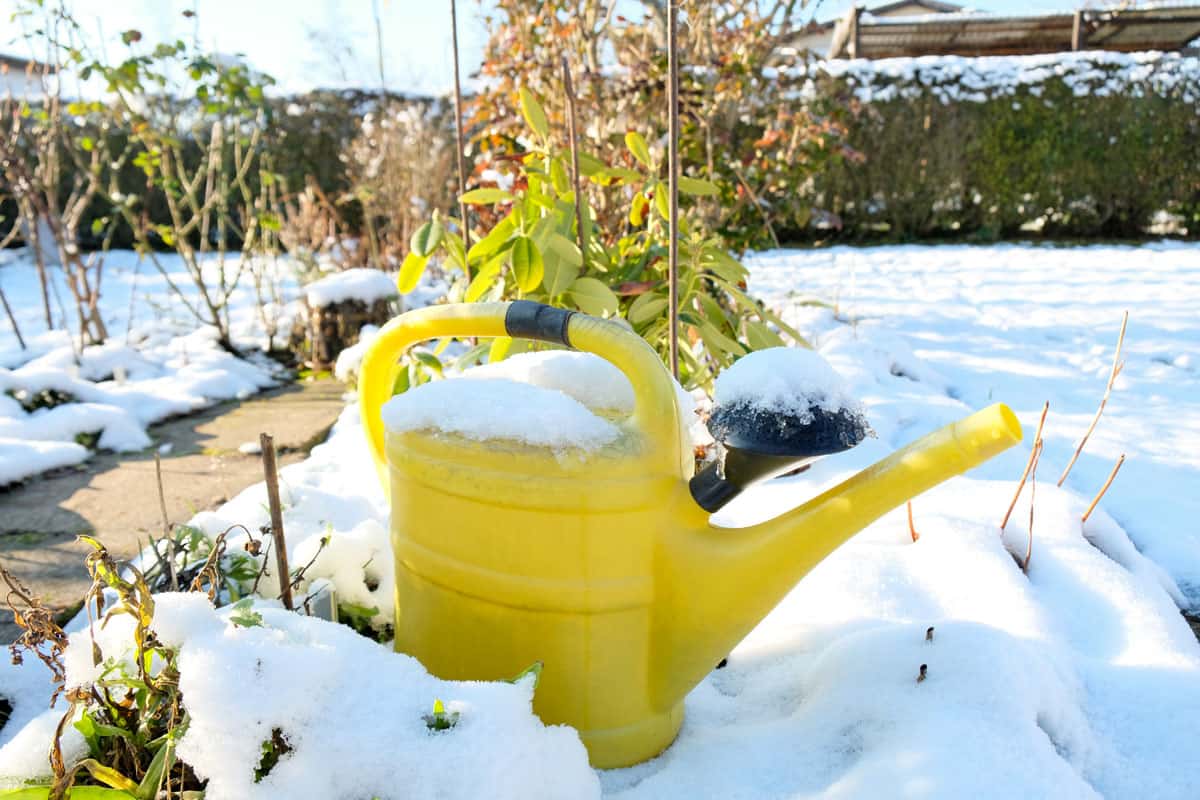
You may wonder, do plants need watering during the winter? The answer is yes!
Winter watering is recommended in many places, particularly if you have seedlings just getting established in your garden. Most gardeners need to water their plants during the winter season.
So, when is the best time to do it, and how frequently should your plants be watered?

The optimum time to water your plants during the winter is in the middle of the day when the temperature is warm, about 40 ºF, to let it soak before the ground freezes at night.
Water your plants once or a couple of times a month up to April, and pick your watering day when neither snow nor frozen ground is present.
Here are additional tips you can do to ensure that your plants receive proper care during winter:
- To achieve the best results, irrigate trees and bigger plants between their trunk and drip lines.
- Anywhere near their crowns are the best place to irrigate small plants.
- Beware of root rot and suffocation brought about by oversaturated ground.
- Use your eyes and fingers to check if the soil is damp. You can do this by clearing the mulch, burying your finger in the ground, and feeling and inspecting the area. With this, you'll know when it's time to water your plants or not.
To Finish
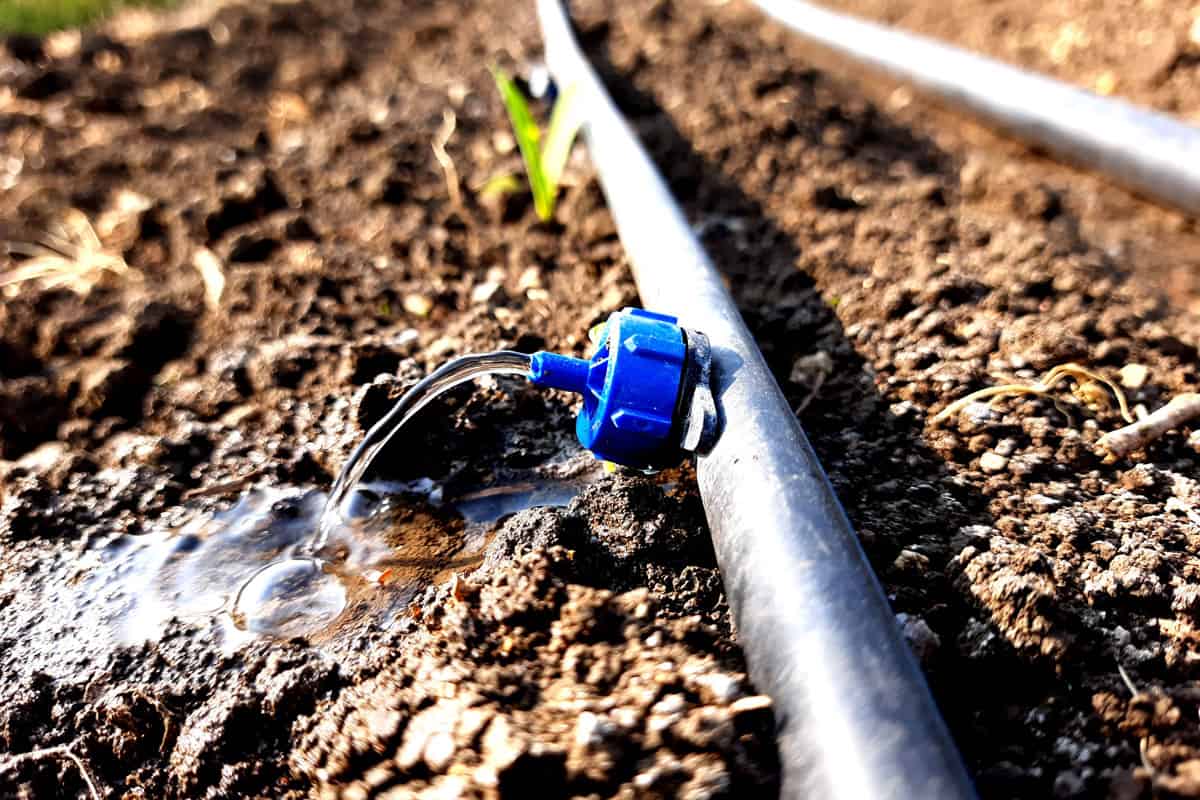
Winterizing your drip lines is an essential task to do. You must do the process correctly if you don't want to damage your drip irrigation system.
Completely drain all the irrigation lines, from the main lines to the lateral lines. Also, don't forget the valves and other fittings that might accumulate water, especially those in the lowest points of your system.
Pumps and other electrical components should be stored indoors for the winter. Don't risk leaving them outdoors to avoid costly repairs when it gets damaged.
And while we have your attention, check out these related articles:




